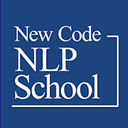ブレークスルーのパターン(後編)
朝、目覚めると、私は、13時間の眠りの間にすっかり汗をかいて、気分がとても良いと感じました。朝食の間、私は、その日にすべき課題、すなわち、前日の患者とのワークで私が使ったパターンを説明することについて考えました。この時、私は、前日行ったことに意識的なアクセスが全く無いことに気付きました。
従って、私は、研修施設に早めに到着して、以下のような質問をしながら、参加者と、情報を引き出す非公式のセッションをすることにしました。
「あなたが最も興味深いと感じたのはどのデモンストレーションですか?」
「その特定のデモンストレーションの何が心を打ちましたか?」
「具体的に私と患者のどのやり取りを最も興味深く感じましたか?」
「具体的にどのように、それらが興味深いと感じましたか?」
…
これらの種類の情報を、トレーニングルームの後方で、少し自暴自棄になりながら、早めに到着した参加者に求めていたとき、私は、部屋の前方、より具体的にはそこにある黒板に、私の目が何度も向けられることに気付きました。最後に、自分の無意識が強く引き寄せられる馴染みのある感じを覚え、「失礼」と言ってトレーニングルームの前方まで進み、黒板の前に立ったところ、そこには、自分自身の手書きで次のように書かれていました。
リフレーミング
1. 変化すべき行動を明確にする
2. 信頼できる不随意のシグナル体系を無意識と確立する
3. 変化すべき行動の背後に肯定的な意図があることを確認する
4. 元の行動と同様にまたはそれ以上に肯定的意図を満たすことのできる
代替手段のセットを生成する
5. 実行のための責任を無意識に受け入れてもらう
6. エコロジーチェック
私は、このパターンの前に立って、私の無意識の直接的産物であるその単純さに驚きました。このパターンは、ゆくゆくはニューコードとクラシックコードのパターンを区別することになると思われる相違を正確に含んだものでした。このエレガントなパターンは、バンドラーと私による長年のワークの産物で、また、ベイトソンとエリクソンの影響の輝かしい統合を表していたということには、今もそのときも疑いがありません。 何というギフトであったことでしょう!
参加者とのさらに進んだ会話から、彼らの何人かは、私が前日に扱った各統合失調症患者とのセッションのあるポイントで、パターンにある項目の一部または全てを(異なる形式で)行ったことに、非常に興味深く気付いていたことが判明しました。これは、前回の4日間のトレーニングでは、参加者の誰も気付かなかったパターンで、極めて効果的なものでした。その日の終わりに、一人の参加者が、私の使っていたパターンを説明するように求めました。私は、私の目の前の黒板にあるパターンがそれですと答えました。
今日まで、長年に渡り、たくさんの個人的な経験と何千人ものクライアントとの経験を持っていて、適切なフレーミングと文脈(コンテキスト)が設定され、指揮権が無意識に明け渡されれば、無意識は非常に複雑でクリエイティブなことを行う能力があるということが何度も証明されてきましたが、私は依然として、結果についてはパワフルで、形式についてはエレガントで、適用については普遍的な、個人的な変化のための完全なパターンの提示となったこの経験に、畏敬の念を感じています。
次のページに続く
▶6ステップリフレーミング(3)「6ステップリフレーミングの分析」1
I awoke in themorning feeling superb after thirteen hours of sleep and a good sweat out. Duringbreakfast, I thought through the task before me for the day – namely, explicating the patterns I had used as part of the previous day's work with the chronics. It was at that moment that I realized that I had absolutely noconscious access to what I had done.
I resolved therefore to arrive at the training facility early and to conduct an informal elicitation session with the participants, using questions such as,
Which of the demonstrations did you find most interesting?
And what struck you about that particular demonstration?
Which specific interactions between myself and the patient did you experience as most intriguing?
You found them intriguing, how specifically?
…
While seeking these classes of information from the early arriving participants with casual desperation in the back of the trainingroom, I noted my eyes wandering repeatedly to the front of the room and more specifically to the blackboard located there. Finally recognizing the familiartug of my unconscious, I excused myself and walked the front of the trainingroom only to find myself standing in front of the blackboard on which thefollowing was written in my own hand:
REFRAMING
1. identify the behavior(s) to be changed
2. establish areliable involuntary signal system with the unconscious
3. confirmthat there is a positive intention(s) behind the behavior(s) to be changed
4.generate a set of alternatives as good or better than the original behavior(s) in satisfying the positive intention(s)
5. get the unconscious to accept responsibility for implementation
6.ecological check
I stood before this pattern stunned by its simplicity − a direct production of my unconscious − a pattern that contains precisely the differences that would come eventually to distinguish patterns of the new codefrom patterns of the classic code. There is no doubt, nor was there any at thetime, that this elegant pattern was the product of years of work by both Bandler and myself and represented a dazzling integration of the influences of Bateson and Erickson. Yet what a gift!
Further conversations with participants revealed that some of them had noted with great interest that at some point in the sessions with each of the schizophrenics I had treated the preceding day, had run someor all of the points listed in the pattern (in varying forms). This was apattern that none of them recognized from the previous four days training that I had conducted and one that had been effective in the extreme. At the close ofthe day, one of them had asked me to explicate the pattern I had been using. My response was the pattern that now appeared before me on the blackboard.
To this day, and with many experiences both personally and with thousands of clients over the years which repeatedly have demonstrated that the unconscious is capable of enormously complex and creative acts when the proper framing and context have been established and the lead is releasedto the unconscious, I remain awestruck by this experience – the presentation ofa complete pattern for individual change, powerful in its consequences, elegant in its form and universal in its application.
('Whispering in the Wind' p.210-211)
John Grinder

Carmen Bostic St. Clair
J & C Enterprises
NLP共同創始者ジョン・グリンダー博士認定校
ニューコードNLPスクール

記事更新日:2022/07/14

















































































